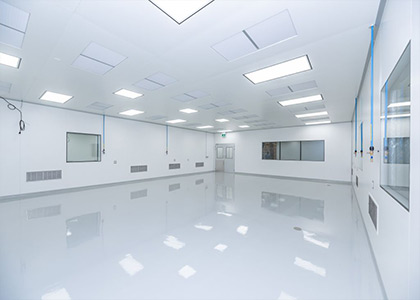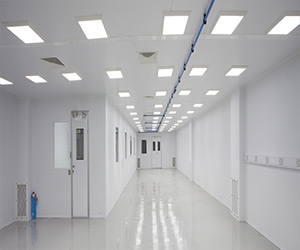- +91 9884528211
Clean Room Construction
CLEANROOM CONSTRUCTION IN BANGALORE
CLEAN ROOMS CONSTRUCTION
Clean room construction plays a vital role in maintaining a controlled environment for precision industries such as semiconductor manufacturing, pharmaceuticals, biotechnology, nanotechnology, and aerospace. These industries demand stringent cleanliness standards to ensure the quality and reliability of their products. Clean rooms provide a contamination-free environment, with controlled temperature, humidity, and particulate levels, to safeguard sensitive processes and delicate equipment. This essay explores the significance of clean room construction, highlighting its key components, design considerations, and the benefits it offers to various industries.

Clean Room Basics:
Contamination Control: Clean rooms are designed to minimize the presence of airborne particles, microbes, and other contaminants that can compromise product integrity and performance. They utilize specialized filtration systems, air pressure differentials, and controlled airflow patterns to maintain a particle-free environment.
Environmental Parameters: Clean rooms regulate temperature, humidity, air quality, and air changes per hour (ACH) to meet specific industry requirements. Precise control of these parameters ensures consistent product quality, reduces the risk of defects, and enhances process efficiency.
Clean Room Classification: Clean rooms are classified according to international standards such as ISO 14644 and Federal Standard 209E, which specify the maximum allowable particle concentration per cubic meter of air. The classification ranges from ISO Class 1 (highest cleanliness) to ISO Class 9 (lowest cleanliness), depending on the industry's needs.
Key Components of Clean Room Construction:
Walls, Ceilings, and Floors: Clean room construction employs smooth, non-porous materials such as stainless steel, epoxy-coated surfaces, and vinyl flooring, which are easy to clean and prevent the accumulation of particles or contaminants.
Air Filtration Systems: High-efficiency particulate air (HEPA) filters and ultra-low particulate air (ULPA) filters remove particles of various sizes from the air, ensuring a clean environment within the clean room. These filters are strategically placed in the air handling units and provide multiple levels of filtration.
HVAC Systems: Heating, ventilation, and air conditioning (HVAC) systems in clean rooms are designed to maintain precise temperature, humidity, and pressure differentials. These systems enable the control of airflow direction, prevent cross-contamination, and ensure consistent air quality throughout the clean room.
Entry and Exit Systems: Clean rooms feature airlocks, gowning rooms, and decontamination procedures to control the entry and exit of personnel, equipment, and materials. This reduces the risk of introducing contaminants from external environments.
Design Considerations:
Space Planning: Clean room design involves careful space planning to optimize workflow, segregate different operational areas, and minimize contamination risks. Factors such as equipment placement, personnel movement, and material flow are taken into account to ensure operational efficiency and cleanliness.
Material Selection: Choosing appropriate construction materials, furnishings, and equipment that are resistant to corrosion, easy to clean, and non-shedding is crucial. Non-particulating materials and low VOC (volatile organic compounds) finishes are preferred to maintain air quality and reduce contamination sources.
Sealing and Airflow Management: Effective sealing of clean room components, including doors, windows, and penetrations, is essential to prevent air leakage and maintain proper pressure differentials. Airflow patterns, such as laminar flow or turbulent flow, are carefully designed to control particle dispersion and minimize cross-contamination.
Benefits and Applications:
Product Quality and Reliability: Clean room construction provides a controlled environment, ensuring consistent product quality, reducing defects, and enhancing reliability in industries such as semiconductor manufacturing, pharmaceuticals, and biotechnology.
Safety and Compliance: Clean rooms play a critical role in complying with regulatory standards and ensuring the safety of personnel and the environment. They enable companies to meet strict industry guidelines, preventing product contamination and protecting employees from hazardous substances.
Research and Development: Clean rooms facilitate cutting-edge research and development in fields like nanotechnology and aerospace, where precision and contamination control are paramount. These controlled environments enable scientists and engineers to conduct experiments and develop innovative technologies with confidence.
Conclusion:
Clean room construction is an indispensable aspect of precision industries, providing controlled environments that safeguard product quality, optimize operational efficiency, and ensure the safety of personnel and the environment. By employing advanced technologies, meticulous design considerations, and adherence to strict cleanliness standards, clean rooms enable industries to achieve consistent and reliable results in their highly sensitive processes. As technology continues to advance, clean room construction will play an increasingly vital role in maintaining the integrity of critical industries.






